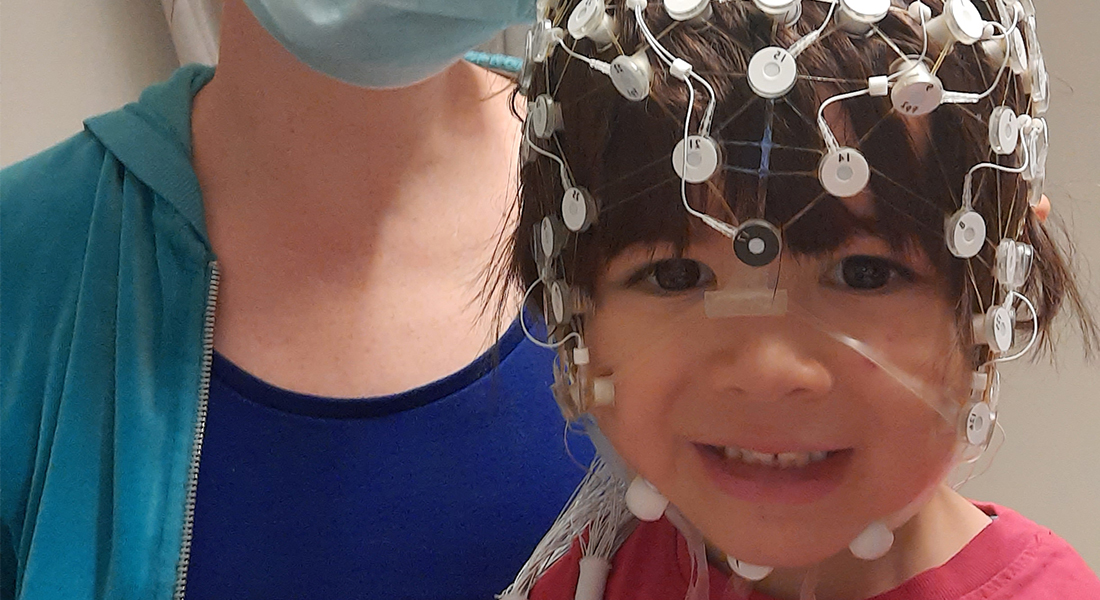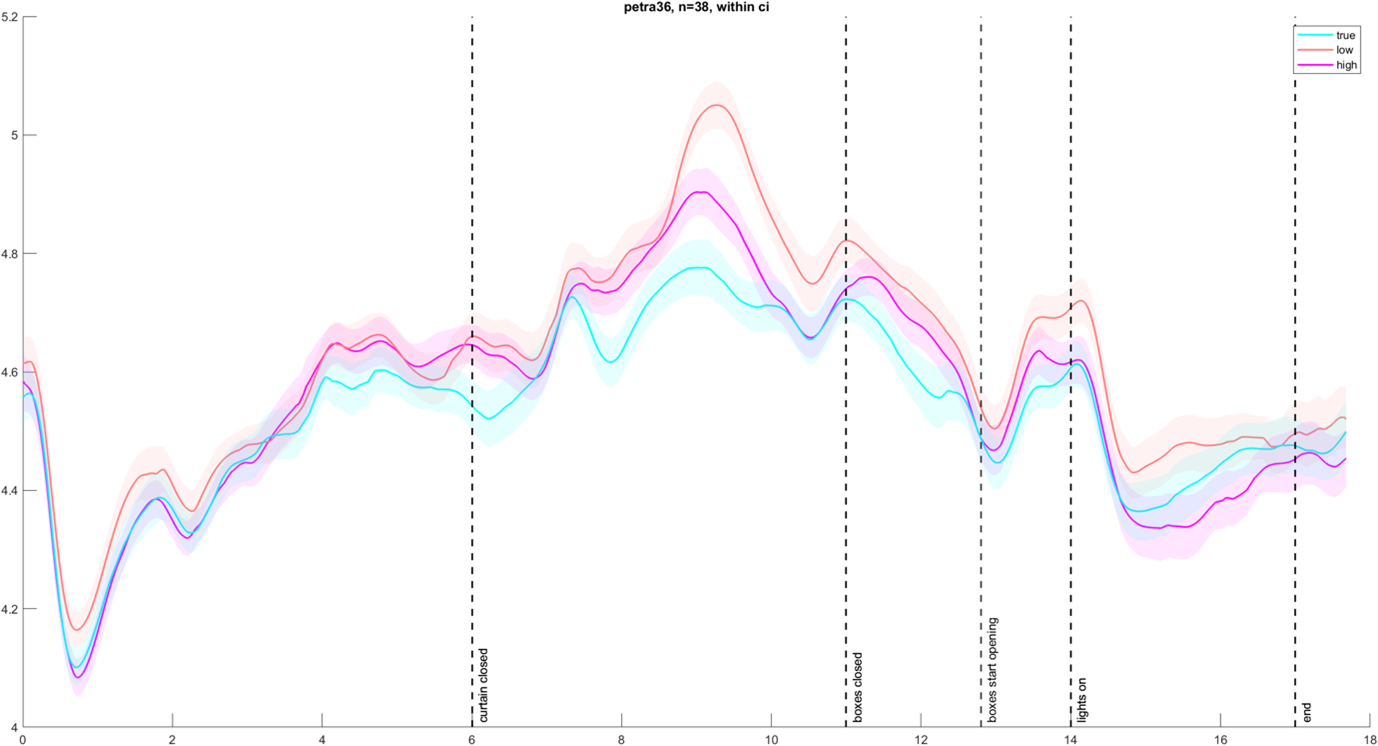Perspective Tracking in Preschoolers
In this study we are extending a similar project with 18-month-old infants to older children by investigating how preschoolers manage different, conflicting perspectives about the same situation.

To study this, 3.5-year-olds watch some short, animated videos in which a person sees a ball jumping into different boxes. In some videos the person does not see that the ball jumps into a different box or outside the screen and in some videos they do. Using eye-tracking, we record where the children look during these videos as well as their pupil size.
Previous studies have shown that our pupils grow a little larger when we experience some conflict or surprise and we are interested in whether young children will show these changes in pupil size when they have information about the location of the ball that differs from the person in the video.
In addition, the children wear a cap that allows us to record the electrical activity in their brain, using a technique called electroencephalogram (EEG). This also allows us to see whether children might experience increased processing at some point while they watch the videos.

After the children watch the animated videos they also play two games with us. In one game they have to learn to press a button on an iPad as quickly as possible while the location of the button changes at random times. In another game children are told some stories about different characters and are asked some questions about what these characters might be thinking or feeling. With these games we are looking to see whether children’s ability to switch between pressing different buttons may be related to their ability to switch between perspectives and whether children’s understanding of complex mental states may relate to where they look in the animated videos (i.e., where they know the ball is or where the other person should think the ball is).

The graph above shows the change in pupil size while the children watched the video. The orange line is data from videos where the ball bounces out of the screen, the pink line is for videos where the ball bounces into the second box and the blue line shows data from videos where the person also witnesses the movement of the ball. These preliminary results show that 3.5-year-old children are most surprised in the videos where the ball jumps out of the screen. We are currently looking at EEG data to see if the children are also less likely to expect the person to reach for a box when the ball bounces out of the screen. Stay tuned for further updates.
 |
|
|
PhD, Professor
victoria.southgate@psy.ku.dk
|
 |
 |
Data collection on this project is ongoing and we are actively recruiting young participants to help us with this project. If your child is between 41-43 months of age and you are interested in participating, please feel free to contact Emanuela Yeung at eyeung@psy.ku.dk.
About the study
Perspective Tracking in Preschoolers began in January 2021 and runs until June 2023.
The study is supported by The European Research Council (ERC).
Contact
Emanuela Yeung
Postdoc
Centre for Early Childhood Cognition
eyeung@psy.ku.dk
